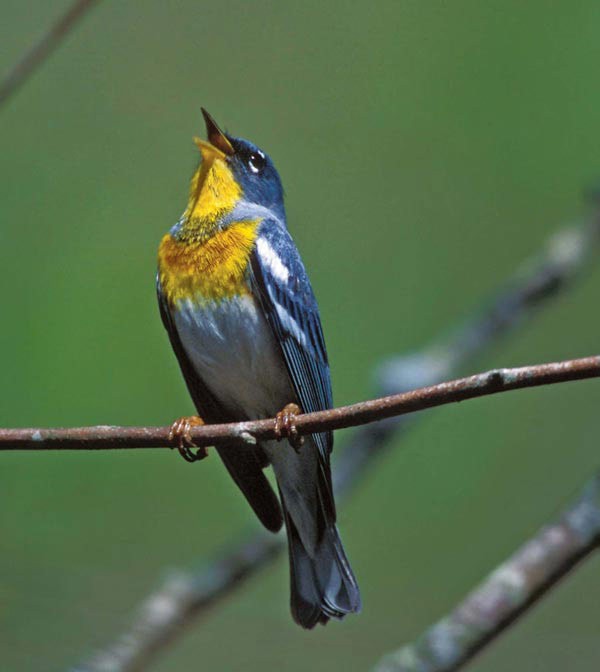Do you remember your answer to that youthful question: if you had to be one or the other, would you rather be deaf or blind? Most of us believed we’d never have to be either, though my answer – blindness – never put me in the majority. To lose sight felt scarier to most because we rely so much on our eyes to navigate the world. But to lose hearing, I believed, was to live in silence, and that felt terrifying.
Deafness would mean losing music and birdsong. They go together. One of the earliest musical instruments is a 4,000-year-old flute made out of vulture bone, found in southern Germany. Anthropologists believe that some of the first human songs were imitations of avian singing. Composers from Maurice Ravel to Philip Glass listened to birds. And poets – think Robert Frost’s evening thrush and Emily Dickinson’s sparrows in the garden – are avid translators. To lose birdsong is to lose a woodland language.
As I’ve gotten older, my understanding of what it means to be deaf has changed and I’ve lost my fear. I’ve watched deaf friends communicate with American Sign Language, and read what I could put my hands on, including When the Mind Hears, A History of the Deaf, by Harlan Lane. Sign language is a manual language as expressive as verbal language, if not more so. It’s metaphorical speech linked to the physical world and beautifully spare in ways hard to imagine for those who don’t speak it. To say a deaf person can hear with their eyes may seem naïve, but it is close to the truth. The entire body and mind becomes an ear: music comes through the subtle vibrations of the air on skin. Perhaps the deaf hear birdsong through voices in the mind we can’t hear.
I’d been in denial about my own hearing loss for a few years, but one summer morning in the White Mountains, my son asked me what bird was singing. I couldn’t hear it. I got exasperated and kept asking where the sound was coming from. “Right there,” he said, pointing at a rock. The blackpoll warbler was singing about four feet away. Losing that song sent my head reeling. It felt like an erasure of a small but important piece of my experience of that place. Sound is an unexpectedly large component of the visual world. What other aural pieces were missing?
Presbycusis – the name for age-related hearing loss – has the unfortunate ring of a religious disease (Greek presbys for elder and akousis for hearing). It occurs when stereocilia – hair cells inside the middle ear that turn fluid pressure into electrical stimuli – begin to die. Birders are sensitive to lost hearing because the enterprise depends on it. Average birdsong frequencies lie in the 4,000-Hz range. But many go up to 8,000-Hz (human speech is 3,000 Hz and lower). Highfrequency hearing loss tends to kick in at 3,000 Hz. Song may represent well over 75 percent of what a bird watcher sees in the woods.
So, it’s a bugaboo. For example, I no longer hear Louisiana waterthrush, a harbinger of spring on our brook. At first, I thought they weren’t nesting. Other birds have fallen out of earshot: winter wren, brown creeper, golden-crowned kinglet, and northern parula, to name a few. It’s like losing friends, only they’re still around.
Fortunately, there are workarounds. Conventional hearing aids can be modified to amplify sound at only the higher frequencies, thus avoiding the problem of sensory overload. SongFinder by Nature Sound Electronics converts high frequencies to digital signals, then divides and lowers them. You hear the lost songs only when they sound lower – like a record playing at a slower speed. Another product is a mobile app that picks up songs via the mic on your smartphone and converts them to graphic sonograms – the sheet music of birdsong.
There are behavioral changes that can help age-related deafness, too. While moving out of the loud cities we tend to live in is one option, that’s often impractical. I’m going to try to rely more on sighting songbirds. I’ll try to learn to pick up the lower-frequency pieces of lost songs I can still hear. I’ll focus on learning the call notes of certain birds. I’m going to spend more time with ducks and shorebirds. I’m going to learn to lean into the quiet, too: my small corner of the deaf world I will relish. That means learning some sign language and communicating with deaf friends to learn how their minds hear by translating sounds from vision, thought, and feeling. Finally, I’m going to prevail upon my wife, children, and friends to learn some of these songs, bird along with me, and tell me what’s coming through.


